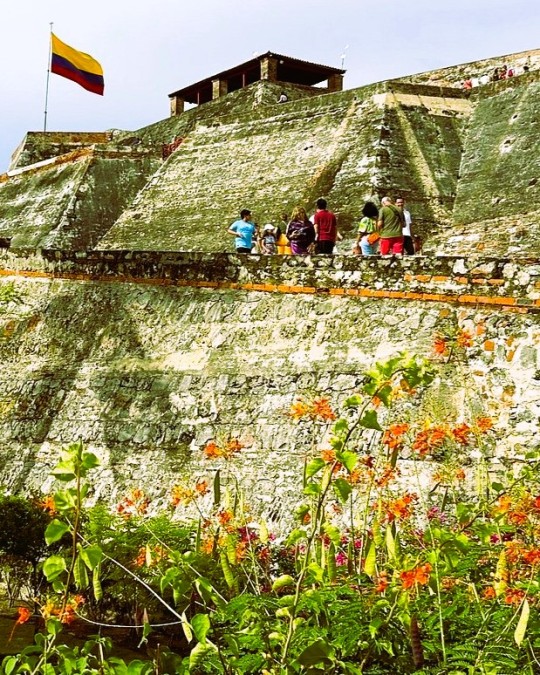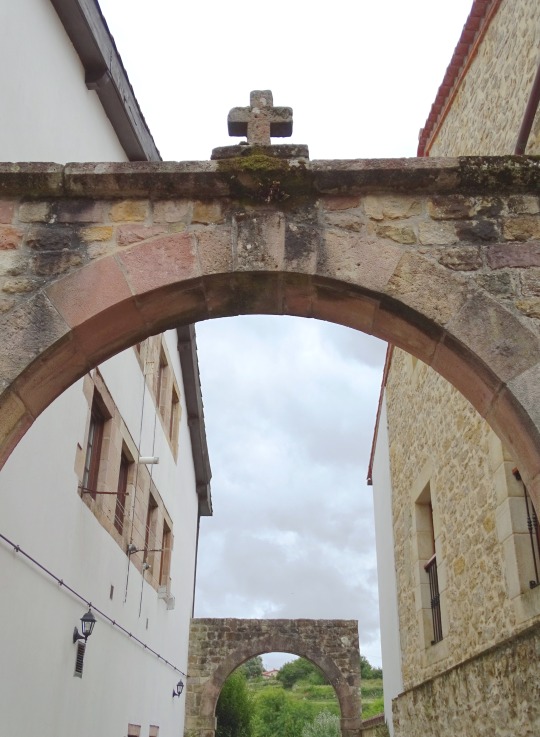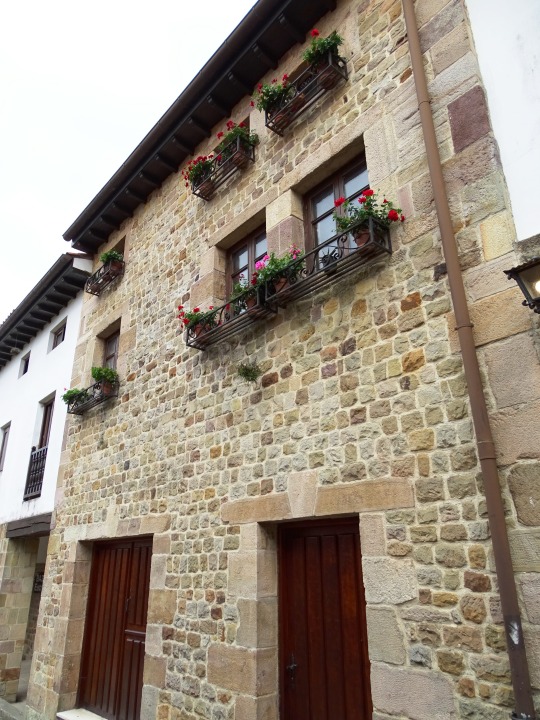#San Lázaro
Text

Dennys Dennys
« The Old San Lázaro »
2017
#dennys dennys#san lázaro#san lazaro#arte#art#cuba#arte latinoamericano#caribbean#latin american art#caribbean art#caribbean artist#antilles#caribeño#babalu aye#lucumí#babalú ayé#yoruba#santeria#santería#lucumi#catholicism#catolicismo
19 notes
·
View notes
Text


Attribution: Pepón Osorio (New York City, USA, b. Santurce, Puerto Rico, 1955-). Partial view of "No Crying in the Barbershop" (En la barbería no se llore), mixed media installation, 1994. As seen in Pepón Osorio: My Beating Heart/ Mi corazón latiente at @newmuseum @newmuseumny New Museum, New York City, USA. Note the canine representation. Sl
#pepón Osorio#perro#dog#san Lázaro#installation art#contemporary art#chien#hund#hond#new york art#arte perruno#arte contemporanea#arte contemporáneo#zeitgenössische kunst#art contemporain
2 notes
·
View notes
Text
Exigen diputadas de oposición respetar recursos para mujeres
(diario.mx) Diputadas de Oposición tomaron la tribuna de la Cámara de Diputados luego de qué legisladoras de Morena intentaron eliminar de una reforma en materia de Centros de Justicia para Mujeres, la obligación del Gobierno federal de garantizar recursos presupuestarios para su funcionamiento.
En el pleno de San Lázaro se discutía una minuta del Senado para reformar la Ley de Acceso de las…

View On WordPress
0 notes
Text
Veneración a San Lázaro, tradición de los cubanos cada 17 de diciembre
Seguidores peregrinan y pagan promesas por la restitución de la salud ante el santo milagroso conocido también como el Babalú Ayé.
En San Lázaro se da la confluencia de dos personajes distintos: San Lázaro, amigo de Jesús – que fue canonizado por la Iglesia Católica Romana – y Lázaro, el pobre mendigo representado como un anciano melenudo y barbudo que viste harapos y usa un par de muletas, con las piernas llenas de llagas y rodeado de perros, que siguen las masas populares.
“Había un hombre rico, que se vestía de púrpura y…

View On WordPress
0 notes
Text
Presenta Maussan dos “cuerpos no humanos” en San Lázaro
Presenta Maussan dos “cuerpos no humanos” en San Lázaro
#PeriodismoParaTi #SociedadNoticias
#SantiagoCreel #Alienigena #SerNoHumano #CámaraDeDiputados #Diputados #CongresoDeLaUnión @Mx_Diputados
En el marco de la Primera Audiencia Pública sobre Fenómenos Anómalos No Identificados, Jaime Maussan, presentó a investigadores y especialistas, los cuales confirmaron que estos cuerpos no son humanos.
Por Carlos Lara Moreno | Reportera
Después de que los Estados Unidos diera a conocer que poseen “restos biológicos no humanos”, esta tarde el…

View On WordPress
#Cámara de Diputados#Clemente Vega García#Diputados#Jaime Maussan#Morena#Presenta Maussan dos “cuerpos no humanos” en San Lázaro#Sedena#SN#Sociedad#Sociedad Noticias#Sociedad-Noticias.com#sociedadNoticias#SociedadNoticias.com#UNAM#Universidad Autónoma de México
2 notes
·
View notes
Photo

The upscale hotels of Bocagrande are visible across the Laguna de San Lázaro at Cartagena, Colombia.
3 notes
·
View notes
Text

San Felipe de Barajas’s fortress, Cartagena, Colombia: The Castillo San Felipe de Barajas is a fortress in the city of Cartagena, Colombia. The castle was built in 1536 and is located on the Hill of San Lázaro in a strategic location, dominating approaches to the city by land or sea. It was originally known as the Castillo de San Lázaro. Wikipedia
51 notes
·
View notes
Text
December 17: The Feast Day of Saint Lazarus
17 deciembre: Fiesta de San Lázaro / Asojano/ Babalú-Ayé

For the followers and devotees of San Lázaro, regardless of the name they call him by, his feast day marks a time of great importance. As the dry season marches on, so too does San Lázaro from the forest to the city.
This march is of course symbolic, not only of his journeys taken in his life (or lives), but also of the arrival of Sickness in the Dry Season. It is vital to remember that Babalú-Ayé is not just a spirit of healing, but the literal personification of Disease and Health.
On this day, traditional offerings include Flowers, Tobacco, Rum/Whiskey, Beans, Popcorn, Coffee and Candies! You can also wear raffia/sack cloth and crawl on your knees as a devotional act to understand and experience some of his Misery, AND his Mysteries.
O Miraculous Beggar! O Holy Leper! Father of the Earth and Patron of the Poor and Sick, Come and Hear my Humble Supplication of Health and Stability! Open my Roads to Opportunities Unimpeded!
Blessed Day of Saint Lazarus, Luz y Progreso! 🕯️
#witchcraft#florida#bioregional animism#bruja#brujeria#florida witch#swamp witch#witch#santeria#traditional witchcraft#san lazaro#saint lazarus#espiritismo#folk witchcraft#folk magic#folkloric witch
10 notes
·
View notes
Text

Esta foto que tomó Josué cuando teníamos diecisiete años.
Era enero de 2006 y la preparatoria se enfilaba precipitadamente hacia su final.
Me acuerdo que aquella vez fuimos a desayunar al restaurante cafetería que Laura me había enseñado y que estaba muy cerca de la preparatoria.
Después de desayunar, en uno de nuestros últimos destellos de infancia, sin explicación alguna, comenzamos a treparnos a los árboles que había en ese camellón solitario pero muy arbolado que está al costado de la Clínica 23. Subir árboles era algo en lo que nunca había sido muy bueno, pero aquel año, gracias a las extenuantes sesiones de acondicionamiento físico que hacía en teatro y a la energía que me daban las hormonas, tenía una agilidad y una fuerza que me desconcertaba, porque, a diferencia de otros momentos en mi vida, mi cuerpo podía hacer todas las cosas que le pedía. Así que esa mañana me pude trepar como nunca lo había hecho y como siempre querido.
Quizás no era algo de no poder, pero en mi infancia siempre tenía la duda de no lograrlo.
Querer y no poder.
A lo mejor siempre pude subirme al árbol, pero estaba seguro de que no podía.
Pero esa mañana, sin dudar, y contra nuestra propia vanidad, que en ese momento ya comenzaba a apoderarse de nosotros, todos nos trepamos. Sin miedo a caernos, ensuciarnos o rasparnos.
A veces pasaba eso.
Alguien hacía algo y de pronto todos nos poníamos a hacerlo también, y éramos felices. Como cuando Alfonso y yo tuvimos nuestra etapa de hacer piruetas y volteretas en el pasto de la prepa, y de pronto todos estábamos ahí, dándonos unos golpazos, pero haciéndolo de todos modos, o como cuando nos pusimos a trabajar durante el verano, algunos vendiendo celulares para la familia de Laura (como yo) y otros se metieron a trabajar al Zoológico de San Juan de Aragón. Lo mismo pasaba cuando alguien llegaba con un nuevo grupo musical, con alguna película o con un libro. Ver o hacer algo era ver o hacer algo todos juntos. Teníamos los mismos cortes de cabello e intercambiábamos la ropa a la menor provocación. Todo era de todos y nada era de nadie. Cada uno era una versión de esa persona colectiva que era nuestra amistad.
Así pasó esa mañana, y Josué tuvo el tino de sacar la mejor foto de nuestra amistad, de la preparatoria que se terminaba y de esa juventud que se nos iba para no volver.
En la foto faltan Jan, Ale, Tania y Laura, y el mismo Josué que tomó la foto y no se ve, pero siento que nos puedo ver a todos en ella.
Nos puedo ver ahí y en el concierto de Josue en Avenida Central, en nuestras mañanas perdidas acostados en el pasto (en una pila de cuerpos como en Where the wild things are), nos veo tomando café porque yo no bebía alcohol y ellos tomaban a escondidas de mí, también nos veo en los conciertos a los que fuimos, caminando por Río San Joaquín para llegar al Salón 21, nos veo esperarnos, esperarme, largas horas en los distintos relojes del metro, San Lázaro, Dpvo. de Oceanía, Moctezuma, nos veo en las fiestas de cumpleaños de Guadalupe, me veo peleando con meseros en un buffet de mariscos de La Viga porque sentía que nos trataban mal por ser jóvenes y nos veo caminando largas horas, sin prisa, por una ciudad que se nos abría.
Todo me gusta de mí en esta foto.
Mi postura, mi camisa, mi pantalón, mis tenis, mi cabello, mis amigos.
4 notes
·
View notes
Photo

Message from the President of Mexico, Andrés Manuel López Obrador on the 85th anniversary of the expropriation of the country’s oil industry.
Rally held on Saturday, March 18, in Mexico City’s Zócalo square.
PRESIDENT ANDRÉS MANUEL LÓPEZ OBRADOR: Friends:
This is a commemoration of the expropriation of the oil industry and it is a national event. Participating here today are residents of Aguascalientes, Baja California, Baja California Sur, Campeche, Chiapas, Chihuahua, Mexico City, Coahuila, Colima, Durango, State of Mexico, Guanajuato, Guerrero, Hidalgo, Jalisco, Jalisco, Chiapas, Chiapas, Chiapas, Chihuahua, Mexico City, Coahuila, Colima, Durango, State of Mexico, Guanajuato, Guerrero, Hidalgo, Jalisco, Michoacán, Morelos, Nayarit, Nuevo León, Oaxaca, Puebla, Querétaro, Quintana Roo, San Luis Potosí, Sinaloa, Sonora, Tabasco, Tamaulipas, Tlaxcala, Veracruz, Yucatán, and Zacatecas.
Long live Mexico!
Friends:
Unlike Francisco I. Madero, who, in order to realize his beautiful democratic ideal could not or did not consider it indispensable to strengthen his ties with the people, especially with the Zapatista peasants, General Lázaro Cárdenas did not hesitate to rely on those from below to make his transformation a reality.
The general's strategy can be summarized in three important and consecutive actions:
First, he distributed land to the peasant farmers and helped the workers.
Then, he helped them organize.
And, finally, with this social base he was able to carry out the expropriation of the oil industry and other national assets that Porfirio Díaz had handed over to private interests, mainly foreigners.
The top priority of the Cardenista strategy was to attend to the economic and social demands of peasant farmers and workers. The president knew that the only way to gain the backing of the people was to act decisively in favor of their demands. Consequently, from the beginning of his government, a program of land distribution was launched; the peasant farmers mobilized throughout the country requesting that they be given land through the expropriation of large estates or providing them with deeds for state land.
In a short time, the distribution of land to peasant farmers transformed the structure of Mexican agriculture. The revolutionary importance of the Cardenista land distribution policies can be measured with a key piece of data. In the first three years of his administration, 9,764,000 hectares were given to 565,216 peasants, which vastly surpassed the amount of land that had been distributed since the Revolution.
By the end of Cardenas’ administration, 10,651 ejidos (1) had been established, comprising a total of more than 18 million hectares and benefiting more than one million indigenous families, impoverished peasant farmers, and rural day laborers.
The peasants unquestionably saw Cárdenas to be a faithful representative of the revolutionary cause. The agrarian reform ensured the loyalty of many people to the Cardenista government and from that point the alliance between peasant farmers and the State was established.
At the same time, during the Cárdenas years, workers felt that their labor rights were guaranteed. With strict adherence to the law, Cárdenas respected the economic struggle of workers for better wages and working conditions. His measures in this field consisted of making the formal content of Constitutional Article 123 (2) a reality.
From the beginning of his government, the labor movement began engaging in intense activity aimed at winning its demands; it was even able to freely exercise the right to strike.
By the middle of the president’s six-year term in office, peasant farmers and workers identified Cárdenas as the defender of their interests. The first part of Cardenas' strategy had been successful; the President's approach and solidarity with the most vulnerable social groups resulted in the support and adhesion of the majority to the government's policies.
The political organization of workers and peasant farmers as a second link in the Cardenista strategy also developed with intensity and enthusiasm.
First, most of the national industrial unions were established. The Mexican Workers’ Confederation, the CTM, was founded on February 24, 1936. Although the organization's declaration of principles stated, and I quote, that 'the Mexican proletariat will fundamentally fight for the total abolition of the capitalist system,' its leaders accepted the president's proposal and agreed on the need to first achieve the country’s political and economic liberation. In accordance with these principles, the workers' movement resolutely supported the government in its struggle for national sovereignty.
On July 9, 1935, President Cárdenas recommended that the organization of Mexico's peasant farmers take place. With this in mind, the agrarian community leagues were created in all states of the country and their integration with the unions of rural wage earners resulted in the establishment of the National Peasant Confederation, the CNC.
The organization and political mobilization of the masses made it possible to advance in the aim of asserting our country’s economic independence, and thus with the expropriation of the oil companies, national assets and resources that had been in the hands of foreigners since the Porfiriato (3) began to be returned to the nation.
This strategy could not have succeeded without the exceptional qualities of a noble and just man such as General Lázaro Cárdenas del Río.
Politics is not only rationality, but also, like other activities in life, requires mystique and convictions. Political processes are more complex than what rationalist intellectuals assume; political processes also involve factors such as luck, the brilliance of leaders and the sentiments of the people.
General Cárdenas, unlike careerist or elite politicians, professed a sincere and deep love for the people. Just as there is no one with the democratic aspiration of Madero, neither has there ever existed in Mexico a president as close to the downtrodden or as convinced of the cause of social justice as General Cárdenas.
For example, in 1935, when he was already president, already in power, Cárdenas wrote the following in his notes:
'To put an end to the miseries experienced by the people is above all other interests'.
And he maintained: 'Living amid the needs and anguish of the people, one will easily find the way to remedy them'.
Although he also confessed that he had been able to see the true moral background of many public servants. 'When I observe in their faces the disgust sparked by the poor peoples’ demand for assistance or justice, then I think more,' he lamented, 'of the endless tragedy of our own people.’
For young people who want to devote themselves to the noble profession of politics, what is most important is love for the people.
In addition to being a true humanist and possessing other virtues, General Cárdenas knew how to navigate his times with precision. Politics, among other things, is time management, a question that is usually essential and defining.
A few days before announcing the expropriation of the oil industry, he wrote in his notes that, on the highway near Cuernavaca, he’d walked and talked for more than an hour with his teacher, friend and compañero, General Francisco J. Múgica. I’d like to quote General Cárdenas when he says:
'We considered the circumstances that could arise if governments such as those of England and the United States, interested in backing the oil companies, pressured the Mexican government with violent measures. But we also took into account that the threat of a new world war is already present due to the provocations of Nazi-fascist imperialism, and that this would stop them from attacking Mexico in the event that the expropriation was decreed.'
Among other reasons, and taking advantage of this circumstance, on March 18, 1938, the oil industry expropriation was launched. At eight o'clock in the evening, General Cárdenas informed his cabinet of this historic decision and, two hours later, in a radio address to the nation he announced the step taken by the government in defense of Mexico’s sovereignty, returning to the nation the oil wealth that, as the General himself wrote, 'imperialist capital had been utilizing to keep the country humiliated.'
In four articles, the expropriation decree establishes that the following assets would become assets of the nation: machinery, installations and other fixtures and property of the foreign oil companies, for which compensation would be paid in accordance with Article 27 of the Constitution and the corresponding law.
The oil expropriation was supported by the majority of the people. Photos of the time show the presence of predominantly humble people, indigenous men and women, peasant farmers, workers, teachers, employees, and members of the lower middle class.
It was the common people who supported and cooperated with the government to raise the compensation due to the foreign oil companies. How could we forget that so many poor women donated goats and turkeys for this purpose and even got rid of the meager jewelry they owned!
In those days, from the city of Oakland, California, migrant worker Cástulo Prado composed the lyrics and music of the Corrido del Petróleo and sent it to the president with the instruction that the government allocate any royalties from the work to the compensation fund. One of its verses reads as follows:
'Lázaro Cárdenas says, serene and carefree: in the course of 10 years, everything will be paid, I have the Mexican people of which I have no doubt. From the youngest to the oldest, they all offer me their help. In the Mexican woman there is patriotism and pride, she gives up her jewelry to offer them for coins.'
In addition to this massive and overwhelming popular support, the Cárdenas government had another favorable circumstance. At that time Franklin Delano Roosevelt, a great statesman and one of the finest presidents that country has ever had in its history, was governing the United States. Let’s recall that when Roosevelt entered the White House on March 4, 1933, the United States was experiencing one of the worst crises in its history and that, as president, Roosevelt knew how to deal with that crisis successfully and very soon restored hope to his people, which made him one of the greatest politicians of the 20th century.
As for his foreign policy, let’s recall that, in a memorable speech, which is the antecedent of the principles of the UN, on January 6, 1941, Roosevelt laid out four basic freedoms for the world: the right to freedom of speech, the right to freedom of worship, the right to live free from want, and the right to live free from fear.
Roosevelt's presidency applied the ‘good neighbor policy’ with the countries of the Western Hemisphere. At that moment, the principles of economic and political cooperation were defined, the sovereignty of Cuba and Panama was recognized, and the U.S. military withdrawal from Nicaragua and Haiti was ordered. It is not by chance that the great poet Pablo Neruda called Roosevelt a titan of the struggles for freedoms, a tremendous president.
The authenticity of his good neighbor policy was most clearly demonstrated in the respect for the sovereignty of our country. During Roosevelt's three presidential terms, relations between Mexico and the United States were exceptionally good.
In the days following the oil industry expropriation, General Cárdenas acknowledged Roosevelt’s role in a letter:
'My government’ -wrote the general- ‘feels that the attitude assumed by the United States of America, in the case of the expropriation of the oil companies, once again affirms the sovereignty of the peoples of this hemisphere that the statesman of the most powerful country in the Americas, the most esteemed President Roosevelt, has been supporting with such effort'.
Cástulo Prado, the poet we have already quoted, a people’s poet, also left testimony of the upright attitude, the grandeur, and the respect shown by the president of the neighboring country. Cástulo's verses read:
'The millionaires asked for intervention. They went to the United States to lodge their complaint -it looks to us, it looks to us, it looks to us- they went to the United States to lodge their complaint so that from there they would move to protect their companies. Roosevelt told them: 'Gentlemen, I can do nothing about it, the Mexican government has fulfilled its duty.'
The good results of this policy had much to do with the U.S. Ambassador to Mexico, Joseph Daniels, who acted with wisdom and skill in the most difficult years of relations between the two countries. His position on the oil conflict is summarized when he maintained that President Cárdenas was right in promoting the policy that the wealth of the subsoil should become part of the Mexican economy and that the oil crisis was due to the systematic refusal of foreign companies to modify their vision, since, Daniels pointed out, they felt that Mexicans were born to enrich foreigners and that God placed important natural resources in Mexico to increase the fortunes found in the coffers of the exploiters and concession holders.
But the companies were not as conscientious and respectful as U.S. politicians. The nationalization process had to confront the boycott, pressures, and acts of sabotage promoted and financed by the foreign oil companies.
In Mexico, the oil industry expropriation caused deep uneasiness among a minority, especially among the wealthy of the time, in middle-class sectors, and in most of the media.
It is interesting, and this is a lesson, to point out that historically the right wing always regroups when a democratic change is sought and becomes intolerant and even violent when it comes to social demands in favor of the people and the nation asserting its control.
Let us remember that the overthrow of President Madero, our Apostle of Democracy, was backed by the intervention of the U.S. Ambassador, but was carried out by domestic right-wing groups which had previously promoted a campaign of hate and discredit consisting of ridiculing the President, President Madero, in the newspapers to the point of treating him as a madman and a spiritualist.
The same thing happened when the expropriation, although it did not directly affect national private interests, served to bring together all the discontent of conservative groups opposed to the agrarian, labor, and educational policies of General Cárdenas.
In this climate, on September 17, 1939, the National Action Party was founded. It was founded as a reaction to the oil industry expropriation. I say this here in the Zócalo because I am not lying, I am speaking the truth.
In 1940, all these reactionary trends manifested themselves very strongly in the presidential election. The right-wing opposition was such that General Cárdenas had to act cautiously, and possibly that influenced him to support the candidacy of Manuel Ávila Camacho and not that of General Francisco J. Múgica, with whom he had more ideological affinity and who represented a greater certainty of continuity and deepening of the social and nationalist policy.
It has always been said that the general did not choose Múgica because of the risk of foreign intervention. However, as we have seen, at that time Roosevelt, who had demonstrated his respect for national sovereignty, was governing and World War II was about to break out, a situation that contributed to dissipating the threat of a U.S. intervention.
In my opinion, what most influenced the decision was the internal political circumstances, that is, the belligerence of the right-wing groups. Remember that, even though he’d decided in favor of the candidacy of Manuel Avila Camacho, who held moderate positions, the presidential election was complicated and violent.
The opposition candidate, Juan Andreu Almazán, had the support of important right-wing groups and a sector of the Army. Even the PAN, which did not run a candidate for the presidency, openly supported him.
At the end of the day, 30 dead and 127 wounded were reported. However, shortly after, Almazán gave in and his supporters, businessmen and right-wing politicians came to an understanding and made a pact for concessions and benefits with the new Ávila Camacho administration.
From then on, the authentic revolutionary ideal and actions for the benefit of the people began to be abandoned, although it must be acknowledged that this alliance between political and economic power perhaps avoided civil war and maintained social peace.
If under Porfirio Díaz, the peace of the graveyard prevailed, after President Cárdenas’ government, the peace of compromises and corruption was established.
In this brief history there are major lessons, the main one being that only with the people, only with the support of the majority, can a popular transformation be carried out to enforce justice and confront the reactionaries who oppose the loss of privileges.
For this reason, today we once again declare, we exclaim from the rooftops: no zigzagging, let us remain anchored in our principles, let us reaffirm the decision and the course we have taken since the administration began. No half measures: we in Mexico will never allow a minority to impose itself at the expense of the humiliation and impoverishment of the majority.
That is why, in our government, corruption is being fought. There is an austere government, without luxuries, and all the savings are used to finance well-being programs, such as pensions for the elderly, support for people with disabilities, single mothers, peasant farmers and fishermen, scholarships for students from poor families, Internet for All, housing improvement and construction programs, collateral-free loans, fertilizer, and guaranteed prices for the country's small producers, the Bank of Well-Being, the promotion of education and universal and free public health care.
This year more than 25 million people will receive direct support totaling 600 billion pesos (4). In other words, out of 35 million households in the country, 71 percent will receive the benefits of at least one of the social programs.
With this policy of attention to the neediest, the most vulnerable, and especially to young people, we have also been able to reduce federal crimes by 33 percent, homicides by 10 percent, vehicle theft by 38 percent, general robberies by 20 percent, huachicol (5) by 92 percent, femicides by 28 percent, and kidnappings by 76 percent.
By the same token, the savings from not allowing corruption or budgetary waste have enabled us to avoid contracting more debt. We have not requested additional debt since we have been in office.
And at the same time, without increasing the public debt in real terms, taxes have not been increased, the price of gasoline, diesel, gas, and electricity have not risen. There has even been a decrease in the price of these energy resources.
There has also been an increase in public investment, as has not occurred in many years. This year we will spend more than one trillion pesos (6) on public work projects. That is, we will continue building highways, bridges, trains, airports, hospitals, universities, markets, sports facilities, seawalls, and natural, recreational, and ecological parks.
And we are carrying out something very important: an extensive project to recover and restore historical and archeological sites of our ancient and splendid cultures and civilizations.
Public finances are strong, the national economy is booming. Last year the Mexican economy grew even more than the economies of China and the United States.
There are an unprecedented 21,747,000 workers enrolled in the health system. This figure of 21,747,000 workers in the formal economy has never been reached before.
In addition, an average wage of 525 pesos (7) per day has been achieved for these workers in the formal economy, something that had never occurred before.
The unemployment rate last January was 2.9 percent, the lowest since 2005.
We are carrying out public work projects. Right here we are refurbishing the Metro line that collapsed.
We are, of course, building the Toluca-Mexico City train line, the Maya Train, the Transisthmic Train and many, many other public works projects.
What is happening?
After many years, we managed to get the United States to offer temporary work visas. Canada was already doing this and the United States did not accept it. Now with President Biden’s change of policy it was achieved, but they are taking skilled workers, ironworkers, welders, who are needed here for the works projects. We are going to make a small modification, because Mexico comes first and then foreign countries, but this shows how much demand there is for jobs in the country.
During the time we have been in office, the minimum wage has increased by 90 percent in real terms, and on the border it has more than doubled.
Do you remember what the lying technocrats used to say? That if wages were increased, there would be inflation. That's all a bunch of nonsense. That is not true. Of course, we have to improve wages responsibly, to strengthen the domestic market, as we are doing, and thus achieve well-being for our people.
The stock market, corporate and bank profits are posting good numbers.
The Banco de México’s reserves have increased by 15 percent, 200 billion dollars in bank reserves.
Foreign investment has climbed to previously unseen figures.
This has also occurred with remittances from our migrant countrymen and women. Thank you very much, fellow countrymen and women. Last year these remittances practically reached 60 billion dollars; this year they are going to exceed 60 billion dollars.
This is very important, because this money gets to the most remote communities, to 10 million families who benefit from them, and with this money the regional economy, commerce and other economic activities are reactivated.
It is also important to emphasize that the peso is the currency that has most appreciated in the world in relation to the dollar, something that has not occurred for more than 50 years.
We have also directed our resources and efforts to achieve food self-sufficiency and energy self-sufficiency. In the latter, as reported here by the Ministry of Energy and the Director of Pemex, we can be certain that oil sovereignty is being guaranteed. Next year we will not be buying gasoline, diesel or other oil products abroad; we will be processing all of our raw materials.
The Federal Electricity Commission, the public company in charge of managing the electricity industry, has been strengthened.
And recently lithium, a strategic mineral used in manufacturing batteries for electric cars and storage systems for clean energy, was nationalized.
It fills me with pride to be able to recall -I apologize for taking so long, but I am about to finish- it fills me with pride to be able to recall today, March 18, that, despite the policy of granting concessions that prevailed before we came into office, we were able to remove a long chapter from the Free Trade Agreement that compromised our oil and put in its place a small paragraph, which I am going to read to you.
It says: 'The United States and Canada recognize that Mexico reserves its sovereign right to reform its Constitution and domestic legislation, and Mexico has the direct, inalienable, and imprescriptible ownership of all hydrocarbons in the subsoil of the national territory.'
My friends:
I am convinced that we will continue to receive the support of the people to consolidate the first stage in the transformation of our country.
I am also convinced that whichever candidate wins the poll to become the candidate of our movement will apply the same policy in favor of the people and in favor of the nation.
Continuity with change is assured. There is nothing to fear. Of course, we have to remain united, always looking towards the future and the happiness of our fellow men and women. This means working from below and with the people, and without neglecting the strategy that we rightly call the revolution of consciences to keep advancing in the change of mentality so as to continue politicizing our people and thus have an increasingly aware population. In this we have made considerable progress, as Mexico is one of the countries with the least political illiteracy in the world.
With that awareness we will continue, with that collective consciousness we will continue to counteract the dirty war, the slander campaigns and the attempts at manipulation that will continue to be waged, because our adversaries and their media, sold out, rented or in the hands of the members of the conservative and corrupt block, have no other choice. But at the same time we must have faith in the wisdom and loyalty of the people, the people do not betray.
Let’s recall that the victory of the reactionaries, as Juarez said, is morally impossible. We are finding that the idea and practice of exalting Mexican humanism is electrifying and is reaching the consciousness of millions of people. I base my optimism on this.
And even though it is more dangerous to underestimate the strength of one’s adversaries than to overestimate it in politics, I maintain that no matter what they do, the oligarchs will not return to power; an authentic and true democracy will continue to prevail in our beloved Mexico.
Friends:
I cannot fail to mention that in the past few days some U.S. legislators, accustomed to seeing the mote in their brother's eye, but not seeing the beam in their own, in a propaganda ploy -we would say here in colloquial language grilla or intrigue- and for electoral, politicking purposes, argued that, if we did not stop the trafficking of fentanyl to the northern border, that they were going to propose to the Congress of their country that U.S. soldiers occupy our territory to confront organized crime.
First, I want to make it clear that this is no longer the time of Calderón or García Luna, that this is no longer the time of shady links between the Mexican government and U.S. government agencies. Now there is no simulation, organized and white-collar crime is truly being fought, because there is no corruption, no impunity, and there are no complicit relationships with anyone.
But what is most important is that from here, from this Zócalo square, the political and cultural heart of Mexico, we remind those hypocritical and irresponsible politicians that Mexico is an independent and free country, not a colony or a protectorate of the United States, and that they can threaten to perpetrate any offense, but we will never, ever allow them to violate our sovereignty and trample on the dignity of our homeland.
Cooperation yes, submission no; interventionism no.
PRESIDENT ANDRÉS MANUEL LÓPEZ OBRADOR: Oligarchy!
Crowd response: No!
PRESIDENT ANDRÉS MANUEL LÓPEZ OBRADOR: Corruption!
Crowd response: No!
PRESIDENT ANDRÉS MANUEL LÓPEZ OBRADOR: Racism!
Crowd response: No!
PRESIDENT ANDRÉS MANUEL LÓPEZ OBRADOR: Freedom!
Crowd response: Yes!
PRESIDENT ANDRÉS MANUEL LÓPEZ OBRADOR: Democracy!
Crowd response: Yes!
PRESIDENT ANDRÉS MANUEL LÓPEZ OBRADOR: Honesty!
Crowd response: Yes!
PRESIDENT ANDRÉS MANUEL LÓPEZ OBRADOR: Social justice!
Crowd response: Yes!
PRESIDENT ANDRÉS MANUEL LÓPEZ OBRADOR: Equality!
Crowd response: Yes!
PRESIDENT ANDRÉS MANUEL LÓPEZ OBRADOR: Sovereignty!
Crowd response: Yes!
PRESIDENT ANDRÉS MANUEL LÓPEZ OBRADOR: Long live the expropriation of the oil industry!
Crowd response: Viva!
PRESIDENT ANDRÉS MANUEL LÓPEZ OBRADOR: Long live the workers and technicians of the national oil industry of yesterday and today!
Crowd response: Viva!
PRESIDENT ANDRÉS MANUEL LÓPEZ OBRADOR: Long live General Lázaro Cárdenas del Río!
Crowd response: Viva!
PRESIDENT ANDRÉS MANUEL LÓPEZ OBRADOR: Viva Mexico!
Crowd response: Viva!
PRESIDENT ANDRÉS MANUEL LÓPEZ OBRADOR: Viva México!
Crowd response: Viva!
PRESIDENT ANDRÉS MANUEL LÓPEZ OBRADOR: Viva México!
Crowd response: Viva!
Translator’s Notes:
1) Ejidos – semi-communal farmland
2) Constitutional Article 123 enshrines labor rights
3) Porfiriato - The period of Porfirio Díaz's presidency of Mexico (1876–80; 1884–1911), an era of dictatorial rule
4) US$31.89 billion
5) Huachicol – the massive theft of fuel from pipelines and refineries
6) US$53.16 billion
7) US$27.91
Translated by Pedro Gellert
México City, March 18, 2023
25 notes
·
View notes
Text

Huatulco National Park in Oaxaca. Photo courtesy of Conanp.
MEXICO CITY — Officials this week announced the creation of 13 new protected areas across six states in Mexico, putting the country’s list of total federally protected areas at 200.
Mexico introduced six new national parks and seven “flora and fauna protection areas” covering 17,918 hectares (44,276 acres) to be overseen by the National Commission of Protected Natural Areas (Conanp). The commission said it expects to declare three additional protected areas by the end of the month.
“It gives us much pleasure that in this administration…we can leave behind such a grand legacy for the Mexican people,” said secretary of the environment and natural resources María Luisa Albores González at a press conference.
The 85-hectare (210-acre) San Quintin National Park was created in Baja California. The 2,076- hectare (5,129-acre) Nopoló National Park and 6,217-hectare (15,362-acre) Loreto II National Park were created in Baja California Sur.
The 4-hectare (9.8-acre) Playa Delfines Flora and Fauna Protection Area, 16-hectare (39-acre) Jacinto Pat Flora and Fauna Protection Area, 37-hectare (91-acre) San Buenaventura Flora and Fauna Protection Area and 10-hectare (24-acre) Cenote Aerolito Flora and Fauna Protection Area were all created in Quintana Roo.

La Sierra de Guerrero in Guerrero, Mexico. Photo courtesy of Conanp.
The 2,489-hectare (6,150-acre) Juan M. Banderas Flora and Fauna Protection Area was created in Sinaloa.
The 723-hectare (1,786-acre) Vicente Guerrero National Park and 282-hectare (697-acre) Hermenegildo Galeana Flora and Fauna Protection Area were created in Guerrero.
In the state of Oaxaca, three protected areas were created: the 1,923-hectare (4,751-acre) Bajos de Coyula Flora and Fauna Protection Area, the 2,237-hectare (5,527-acre) Huatulco II National Park and 1,812-hectare (4,477-acre) Ricardo Flores Magón National Park.
The wave of new of protected areas came in response to a mandate from President Andrés Manuel López Obrador to establish a conservation status in areas with “high environmental value.” Since taking office in 2018, López Obrador’s administration has protected over 4 million hectares (9.8 million acres) of land and water.
“I want to go down in history as the president with the second-most protected reserves created,” López Obrador said earlier this year. “…Lázaro Cárdenas has the first spot. I want to aspire to that.”
#🇲🇽#mexico#enviornment#conservation#flora#fauna#National Commission of Protected Natural Areas#Conanp#María Luisa Albores González#AMLO#San Quintin National Park#baja california#Nopoló National Park#Loreto II National Park#baja california sur#Playa Delfines Flora and Fauna Protection Area#Jacinto Pat Flora and Fauna Protection Area#San Buenaventura Flora and Fauna Protection Area#Cenote Aerolito Flora#Fauna Protection Area#Quintana Roo#La Sierra de Guerrero#guerrero mexico#Juan M. Banderas Flora and Fauna Protection Area#sinaloa#Vicente Guerrero National Park#Hermenegildo Galeana Flora and Fauna Protection Area#oaxaca mexico#Bajos de Coyula Flora and Fauna Protection Area#Huatulco II National Park
6 notes
·
View notes
Link
2 notes
·
View notes
Text

The Puente de San Lázaro. Plasencia, Spain.
Explore:
#bridge#old bridge#medieval#historical architecture#architecture#original photography#photographers on tumblr#travel#wandering#urbanexploration#wanderlust#lensblr#photography#puente#españa#spain#plasencia#wanderingjana
4 notes
·
View notes
Text
El Caifan, Oscar Chávez, posa para la foto en los andenes de la Estación San Lázaro, a principios de la década de los setenta.

36 notes
·
View notes
Photo










Santillana del Mar, Spain (No. 6)
During the Modern Age, the Asturias de Santillana became part of the jurisdiction of the Corregimiento de las Cuatro Villas , an area then led by Laredo . In 1509 the abbot recognized the III Marquis of Santillana, but only after violent military confrontations, in an attempt to recover religious power over the town. The urban and economic development of the town stagnates during the 16th century when Santillana did not participate in the Lawsuit of the Nine Valleys, important in the history of the institutions that gave rise to Cantabria. As a result, Santillana was administratively marginalized; however, it reappeared in the 17th century thanks to the wealth linked to its participation in the Spanish expansion in Europe and America.
At the end of the 16th century and during the 17th century , most of the houses that are preserved today in Santillana del Mar were built, configuring its nucleus as it exists today. Almost all of them follow the same typology, with two floors, a front open space and a larger rear space originally dedicated to corral, sunrooms or wrought iron or wooden balconies, and noble coats of arms, abundant in the town. Santillana is therefore essentially Baroque , although its
urbanization process remains unknown.
Outside the town were the building complexes of the religious orders built at that time. These were the convent of Regina Coeli of the Dominicans, that of San Ildefonso of the Dominicans, the Hospedería de Peregrinos y Pedestrians , the Hospital de la Misericordia and the Hospital de San Lázaro de Mortera. At the end of the 17th century , the collegiate church of Santa Juliana competed with that of the Holy Corps (in Santander) to obtain cathedral ownership.
Source: Wikipedia
#C. Jesús Otero#Town of Three Lies#Torrelavega#Santillana del Mar#Spain#architecture#Casco Histórico de Santillana del Mar#old town#cityscape#España#Northern Spain#Southern Europe#summer 2021#vacation#travel#tourist attraction#landmark#street scene#cobblestone#alley#Church of the Colegiata in Santillana#flora#flower#nature#Cantabria
7 notes
·
View notes
Text
LGBTQ+ Latin-American of the day:
PAOLA LÁZARO 🇵🇷

She is an actress, writer and playwright born in San Juan, Puerto Rico, in October 24, 1994. She’s pansexual.
10 notes
·
View notes